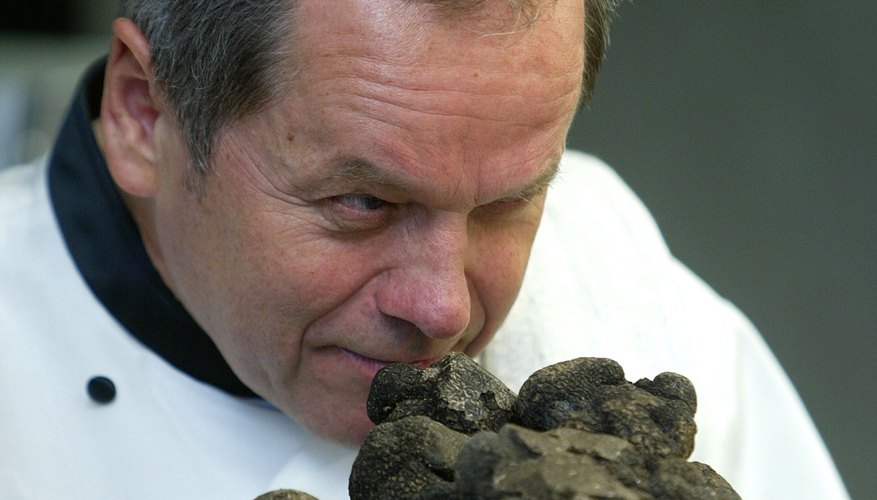Although most people associate truffles with France, the UK is home to two major varieties of truffle. Truffle growing is an important source of income for some farmers, while gourmets and lovers of the outdoors enjoy the hobby of truffle-hunting. British truffles are found in a range of environments across the country.
British truffle species
Two main varieties of edible truffles grow in the British Isles. British summer truffles and Burgundy truffles are in fact the same species, but environmental factors produce such a wide range of differences in size, aroma and flavour that truffle-hunters treat them as if they were completely different species. Both truffles are black in colour and covered with bumps. The flesh of the summer truffle is brown and white, while the Burgundy truffle is grey and black.
- Two main varieties of edible truffles grow in the British Isles.
- The flesh of the summer truffle is brown and white, while the Burgundy truffle is grey and black.
Truffle habitats
Truffles grow underground, usually in association with trees. The most common species of tree to find truffles near are beech, oak, birch and hazel. Truffles thrive in damp soil; in drier continental climates, they are typically found deep below the surface, but in damp English woodland they may be closer to the top, even breaking through to appear above ground. Some truffle hunters search for the fungi with specially-trained dogs, while others prefer to seek them out with the unaided eye.
- Truffles grow underground, usually in association with trees.
- Truffles thrive in damp soil; in drier continental climates, they are typically found deep below the surface, but in damp English woodland they may be closer to the top, even breaking through to appear above ground.
Truffle regions
Woodland favourable to truffle growth tends to sit primarily on chalk or limestone soil. Truffles can be found as far north as Yorkshire, but major areas of truffle-hunting in England are in Dorset, Sussex, Berkshire and Wiltshire. Wiltshire was a major area in the truffle industry well into the 20th century, while the modern truffle-hunting boom is centred on Lewes in Sussex. Truffle hunters keep the location of their favourite truffling areas secret, hoping to take advantage of their superior local knowledge.
- Woodland favourable to truffle growth tends to sit primarily on chalk or limestone soil.
- Truffles can be found as far north as Yorkshire, but major areas of truffle-hunting in England are in Dorset, Sussex, Berkshire and Wiltshire.
Agricultural truffle cultivation
In addition to wild truffles, some farmers cultivate truffles for sale. While the enjoyment of truffle hunting is an important part of the appeal for many, commercially grown truffles are more efficient to harvest. In order to cultivate truffles, farmers or landowners take a patch of woodland known to be suitable for truffle growth and attempt to make it more hospitable to the fungi. The correct levels of light and moisture are important to create the greatest likelihood of truffle growth.
- In addition to wild truffles, some farmers cultivate truffles for sale.
- In order to cultivate truffles, farmers or landowners take a patch of woodland known to be suitable for truffle growth and attempt to make it more hospitable to the fungi.
